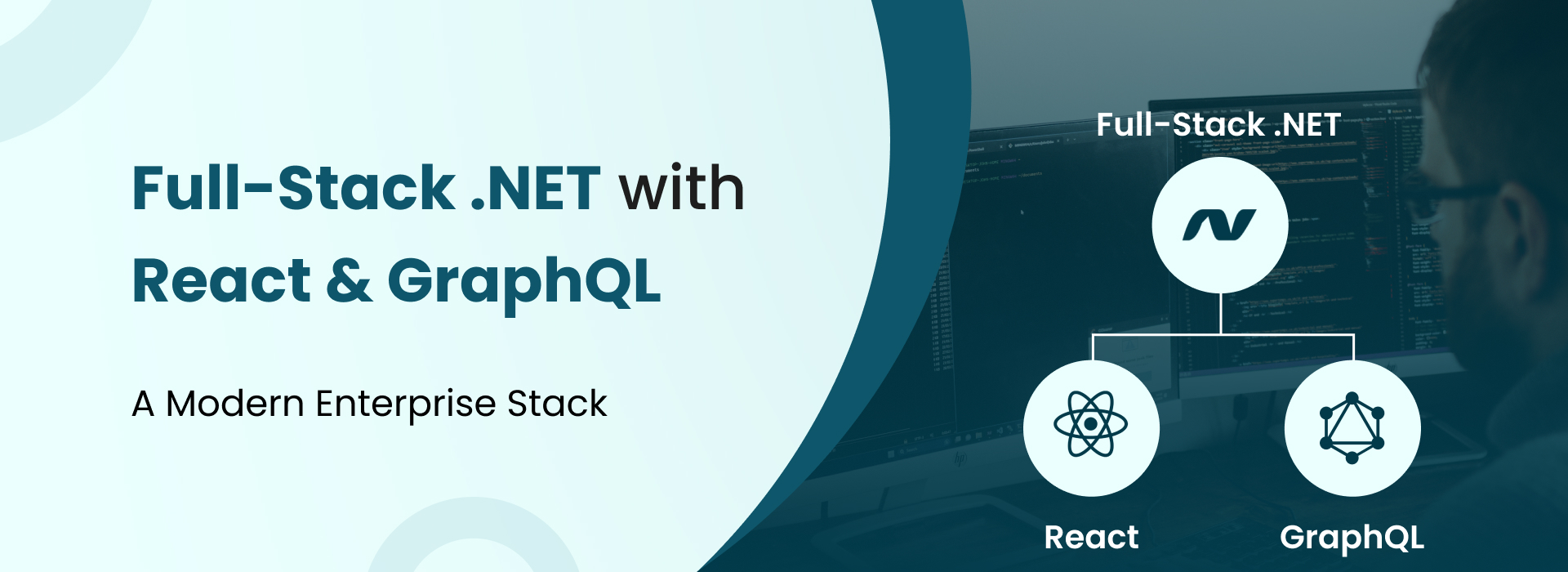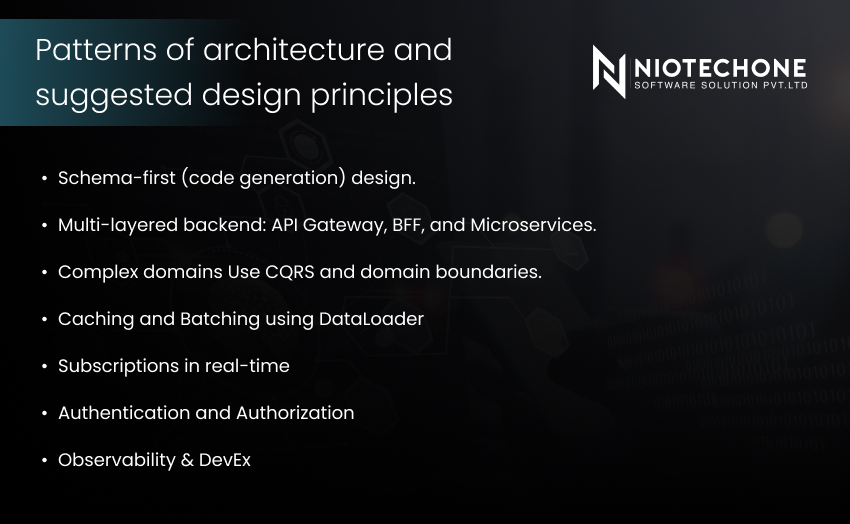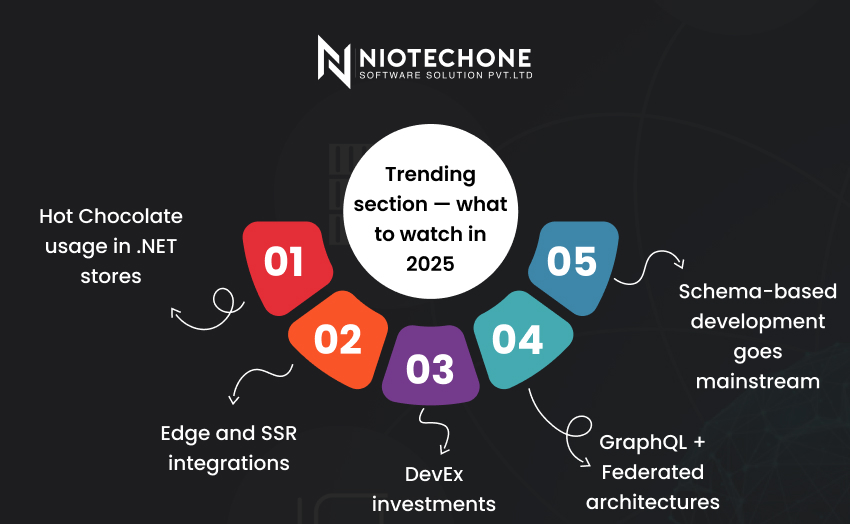1. Schema-first (code generation) design
Begin with a GraphQL schema that reflects your domain (users, orders, products, entitlements). Create server and client types using schema-first tooling. Hot Chocolate in .NET has schema-first and code-first; React clients can be generated with GraphQL Code Generator to produce TypeScript types and hooks. This generates end-to-end type-safety, reducing bugs.
2. Multi-layered backend: API Gateway, BFF, and Microservices
In the case of enterprises, a layered design can be used: a GraphQL gateway/BFF can be placed on the front (it can be stitched together with other services), domain logic can be in microservices or modular monoliths. Hot Chocolate may serve as a GraphQL gateway and stitching or remote schema.
3. Complex domains Use CQRS and domain boundaries
Command Query Responsibility Segregation (CQRS) assists in isolating writes (commands) and reads (queries). GraphQL query layers can be optimized to read models, mutations can be mapped to command handlers in a distinct layer, and this makes complex enterprise systems maintainable.
4. Caching and Batching using DataLoader
DataLoader patterns on the server can be used to avoid N+1 query problems. Hot Chocolate has built-in DataLoader support. To clients, normalized caches in Apollo Client or Relay can be used to minimize unnecessary requests.
5. Subscriptions in real-time
Real-time features (dashboards, live notifications) are well supported by GraphQL subscriptions (WebSockets or server-sent events). Hot Chocolate is subscription-friendly, and React clients can use it through Apollo subscriptions.
6. Authentication and Authorization
Auth backbone uses ASP.NET Core development Identity, JWT, OAuth/OpenID Connect. Add field-level authorization to the GraphQL schema (Hot Chocolate has directives and authorization middleware). Internal fields should not be exposed to the user unless the user is authorized.
7. Observability & DevEx
Tracing (OpenTelemetry) instrument resolvers, logs, and metrics. GraphQL may hide the number of calls to the backend that a query makes- observability is critical to know cost and performance.














